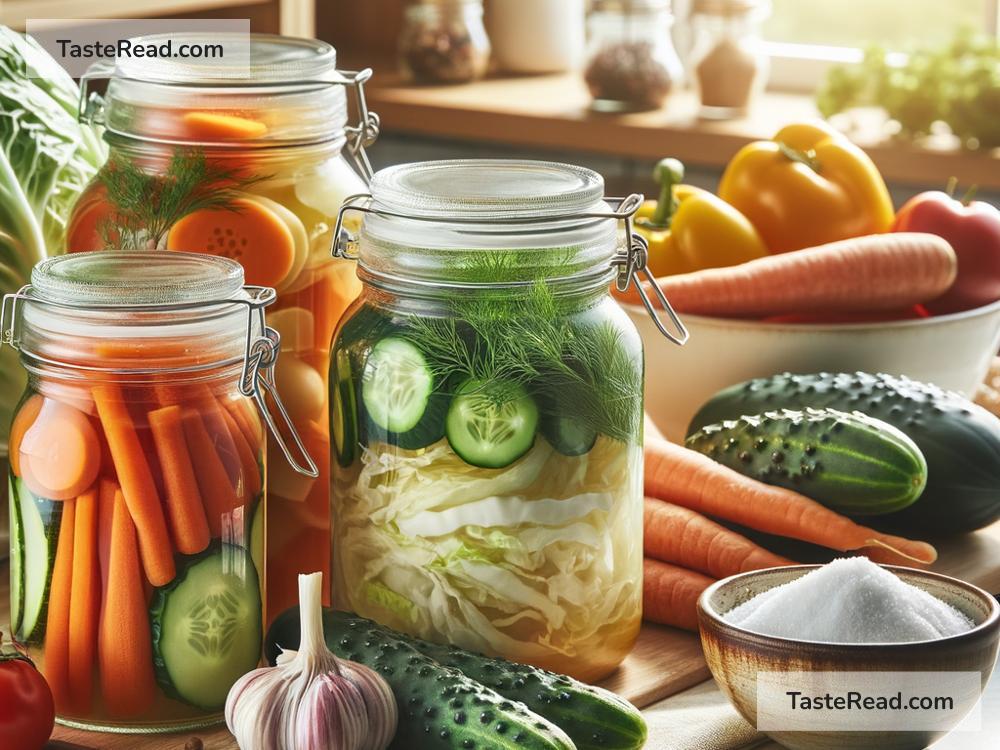Zero-Waste Techniques for Fermenting Vegetables: A Simple Guide
In our quest towards a sustainable lifestyle, reducing kitchen waste is a pivotal goal. Fermenting vegetables is a fantastic method to not only minimize waste but also to enrich our diet with probiotics. Fermentation is the process that takes place when the natural bacteria in vegetables convert sugars into lactic acid, a natural preservative that inhibits harmful bacteria’s growth. This age-old technique enhances food’s nutritional value, makes it more digestible, and extends its shelf life without the need for refrigeration. Here, we delve into simple zero-waste techniques for fermenting vegetables that are easy enough for beginners.
1. Select Your Veggies
Start with your choice of vegetables. The great part about fermentation is that it’s versatile. You can ferment almost any vegetable, from cucumbers and carrots to cauliflower and cabbage. If you’re looking to minimize waste, consider using parts of vegetables that you’d normally discard. The ends of cucumbers, carrot peels, the outer leaves of cabbage, or even the stems of kale can all be fermented. This not only reduces waste but also lets you experiment with unique flavors and textures.
2. Prepare Your Veggies
Once you’ve selected your vegetables, it’s time to prepare them. Wash them thoroughly, preferably with just water to avoid the introduction of chemicals. If you’re using scraps and peels, ensure they’re clean and free of blemishes. Cutting your vegetables into smaller pieces or slices can help speed up the fermentation process, as it increases the surface area for the bacteria to work on.
3. Choose Your Container
The beauty of fermenting vegetables is that you don’t need specialized equipment. A clean glass jar – like one from pasta sauce or pickles – can be repurposed for fermentation. Ensure the jar is well cleaned and sanitized to avoid introducing harmful bacteria. Using what you already have at home not only cuts down on waste but also makes this endeavor cost-effective.
4. Prepare the Brine
The brine is a simple solution of water and salt. Salt is crucial in the fermentation process as it inhibits the growth of unwanted bacteria while fostering an environment in which lactobacilli (good bacteria) can thrive. The ratio is important; generally, a tablespoon of salt per two cups of water is a good place to start. If you’re looking to be extra resourceful, use filtered or boiled tap water instead of bottled water to prepare your brine.
5. Submerge the Veggies
Place your prepared vegetables in the jar, packing them tightly. Pour the brine over the veggies, ensuring they are completely submerged. It’s vital that the vegetables stay under the brine to prevent exposure to air, which can lead to spoilage. If you need something to keep the veggies submerged, get creative: a clean, boiled rock or a ziplock bag filled with brine (in case it leaks) can serve as a weight.
6. Ferment
Now, the waiting game begins. Cover the jar with a cloth and a rubber band. This setup allows gases produced during fermentation to escape while keeping contaminants out. Store the jar in a cool, dark place. The fermentation time can vary depending on the vegetable, the temperature, and your taste preference. It could take anywhere from a few days to a few weeks. Taste periodically, and once you’re happy with the flavor, seal the jar and move it to the refrigerator to slow down fermentation.
7. Zero-Waste Tips
- Repurpose Scraps: Beyond fermenting, vegetable scraps can be saved and used to make stock.
- Compost: If you’re left with any unfermentable bits, composting is a great way to ensure they don’t go to waste.
- Share the Love: Fermented foods make great gifts. Sharing them can encourage others to try fermenting, spreading the zero-waste mindset.
Conclusion
Fermenting vegetables is a deceptively simple yet profoundly impactful way of embracing a zero-waste lifestyle in the kitchen. It requires minimal equipment, makes use of “waste” materials, and the result is a nutrient-rich, probiotic-packed, and delicious addition to your meals. By following these simple steps, anyone can start fermenting vegetables. Not only will this endeavor reduce your household waste, but it will also connect you with an age-old tradition of food preservation that’s both sustainable and gratifying. Let’s embrace fermentation as a path toward a more sustainable and healthy life.


